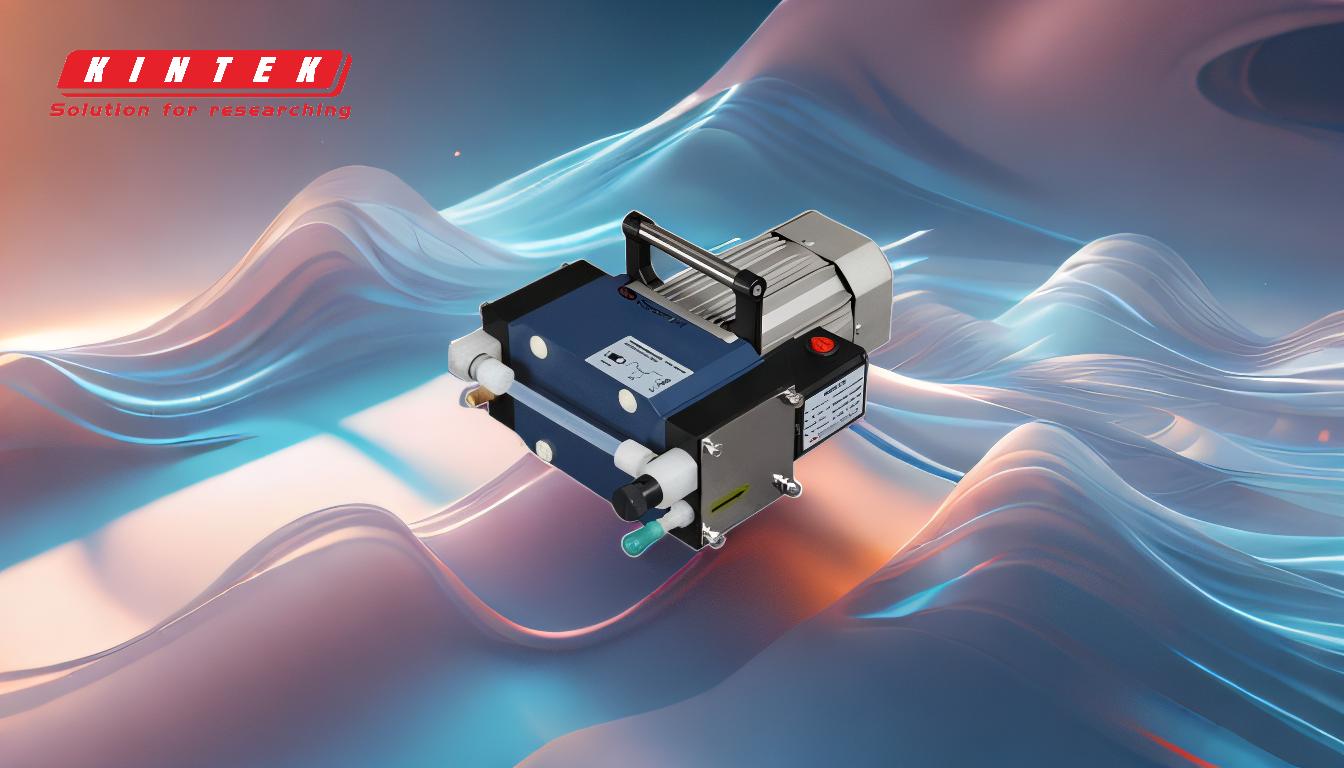Dry vacuum pumps offer several advantages over traditional oil-sealed pumps, such as reduced contamination risks, lower maintenance requirements, and no need for oil disposal. However, they are not without their disadvantages. The primary drawbacks include a higher initial cost, potential limitations in compatibility with certain equipment, and the need for careful selection based on specific application requirements. While dry pumps are more durable and versatile, their upfront investment and operational constraints may pose challenges for some users.
Key Points Explained:

-
Higher Initial Cost
- Dry vacuum pumps, such as diaphragm, piston, scroll, and turbomolecular pumps, typically have a higher upfront cost compared to oil-sealed pumps. This can be a significant barrier for budget-conscious buyers, especially in smaller laboratories or facilities.
- While the long-term savings in maintenance, oil replacement, and disposal costs can offset this initial expense, the immediate financial outlay may still be a disadvantage for some users.
-
Compatibility Limitations
- Some dry vacuum pumps, particularly speed-controlled models, may have limited compatibility with specific equipment. For example, they are often designed for use with rotary evaporators and may not be suitable for other applications.
- This limitation can restrict their versatility and require users to invest in multiple pump types for different processes, increasing overall costs.
-
Application-Specific Selection
- Dry vacuum pumps are not universally suitable for all vacuum applications. Their performance can vary depending on the required vacuum range, gas type, and process conditions.
- Users must carefully evaluate their specific needs to select the appropriate type of dry pump, which may require additional research and expertise.
-
Potential for Higher Operational Complexity
- While dry pumps generally require less maintenance than oil-sealed pumps, they may still need specialized care or calibration to maintain optimal performance.
- Certain dry pump technologies, such as turbomolecular pumps, may also require additional infrastructure, such as cooling systems, adding to operational complexity.
-
Noise Levels
- Although dry pumps are often marketed as low-noise options, some types (e.g., piston or diaphragm pumps) can still produce significant noise during operation. This may be a concern in noise-sensitive environments.
-
Durability and Wear
- While dry pumps avoid corrosion caused by fluid substances, they may still experience wear and tear over time, particularly in high-duty applications. This can lead to the need for periodic replacement of wear parts, though less frequently than with oil-sealed pumps.
-
Energy Efficiency Considerations
- While dry pumps can be more energy-efficient in the long run, their energy consumption may vary depending on the technology and application. Users should evaluate the energy efficiency of specific models to ensure cost-effectiveness.
-
Environmental Impact of Manufacturing
- The production of dry vacuum pumps, particularly those with advanced technologies like turbomolecular pumps, may have a higher environmental footprint due to the materials and processes involved. This is a less direct but still relevant disadvantage for environmentally conscious buyers.
In summary, while dry vacuum pumps offer significant advantages in terms of cleanliness, maintenance, and versatility, their higher initial cost, compatibility limitations, and potential operational complexities are important considerations. Buyers should carefully assess their specific needs and weigh these disadvantages against the long-term benefits of using dry vacuum pumps.
Summary Table:
| Disadvantage | Details |
|---|---|
| Higher Initial Cost | Higher upfront cost compared to oil-sealed pumps. |
| Compatibility Limitations | Limited compatibility with certain equipment. |
| **Application-Specific Selection | Requires careful evaluation based on vacuum range, gas type, and processes. |
| Operational Complexity | May need specialized care, calibration, or additional infrastructure. |
| Noise Levels | Some types can produce significant noise. |
| Durability and Wear | Wear and tear in high-duty applications may require periodic part replacement. |
| Energy Efficiency | Energy consumption varies by technology and application. |
| Environmental Impact | Higher environmental footprint in manufacturing. |
Need help choosing the right vacuum pump? Contact our experts today for personalized advice!







